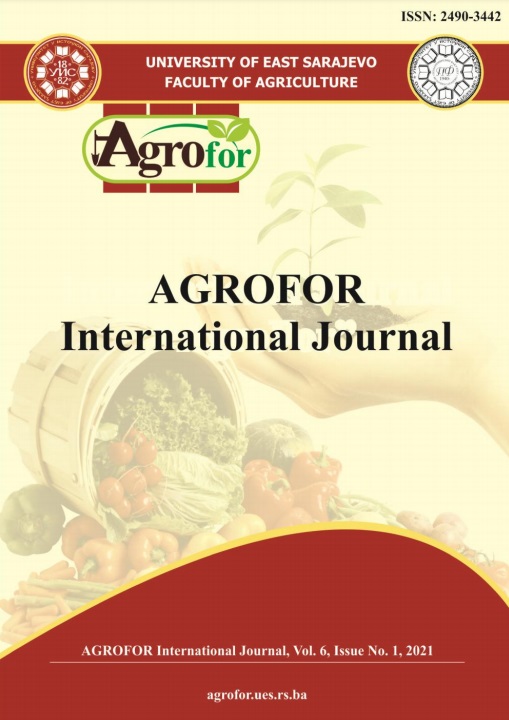SOLVING THE PROBLEM OF CONTAMINATING SMOKED FOOD WITH CARCINOGENIC COMPOUNDS OF SMOKE
DOI:
https://doi.org/10.7251/AGRENG2101005SAbstract
Meat and fish smoked products, widely produced nowadays, occupy a permanent
place in the mass diet. The consumption of smoked meat is estimated by FAO at
15.6 million tons in 2019 (+40 % growth over the past ten years). This is due to the
increased incomes of consumers in many countries, which made meat and fish
smoked products, once classified as "premium" delicacies, more accessible to the
majority. There has been a shortage of high-quality raw materials, which,
combined with a highly competitive food market, forces manufacturers to reduce
their costs by using non-traditional raw materials. The latter leads to increased use
of processing raw materials with smoke to effectively mask individual defects in
taste, appearance and consistency of products. As a result, there is a carcinogenic
contamination problem because of polyaromatic hydrocarbons (PAHs) presented in
the smoke and smoking liquids, and the growth of cancer. PAHs are formed as a
result of pyrolysis of wood during smoke generation at temperatures above 450-
480 °C. Currently used smoke generators and schemes for cleaning smoke from
PAHs are not effective enough, so they do not eliminate the main cause of PAH
formation, uncontrolled pyrolysis. The principal solution to the problem is to
develop methods and equipment for producing smoke at temperatures below
carcinogenic peaks. A successful solution is the method for producing smoke with
an infrared power supply, implemented in the design of IR smoke generator (IRSG).
The device allows to reliably maintain the pyrolysis temperature of wood
below 450 °C. The effectiveness of the method and apparatus is confirmed by
studies of products smoked with IR-SG, in which the content of Benzo(a)pyrene is
less than 0.0002 mcg/kg, which is lower than the maximum permissible
concentrations of this compound in food.

